Wood Bleach: Handy Facts You Should Know
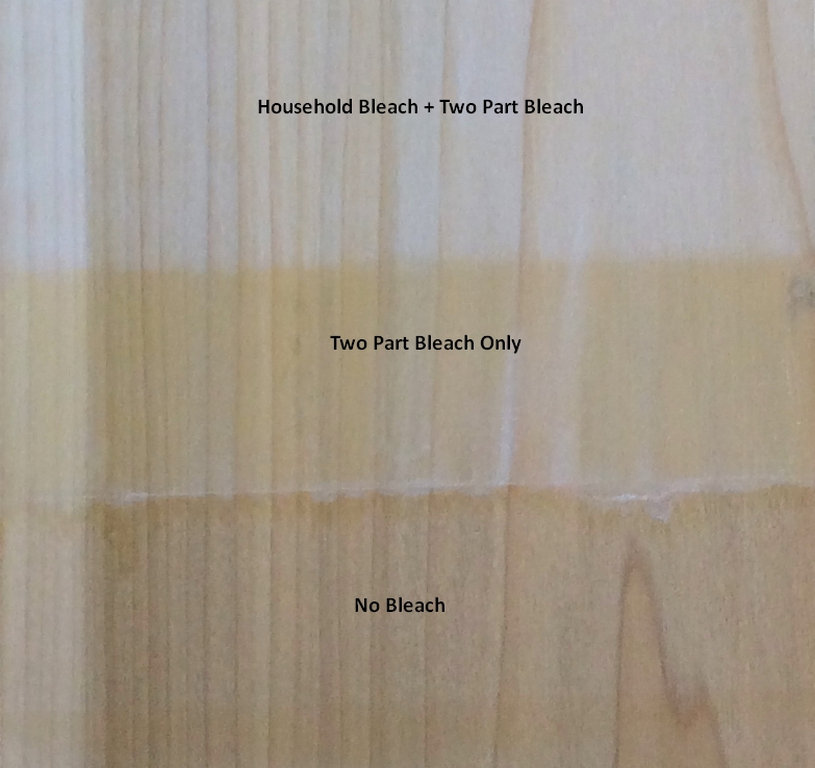
Bleaching wood is not something you should or will do very often, but there are times when it can be of great benefit. If you routinely refinish old furniture you may already be familiar with using different types of bleach to lighten wood, eliminate stains, and remove old dye in preparation for new coloring and finishing.
Bleaching can be an effective way to even out the color variation of different boards within a wood species, so that mismatched boards can be used together in table tops, door panels, etc.
There are three major types of bleach that are available and suitable for use with wood: household chlorine bleach, two‐part bleach, and oxalic acid. In this article we’ll take a look at each one to understand what they do and how to best use them.
Warning: These chemicals can be dangerous if used improperly. Be sure to wear rubber gloves and chemical goggles when working with any of these products, and read the safety information that comes with each one prior to using.
Household Chlorine Bleach
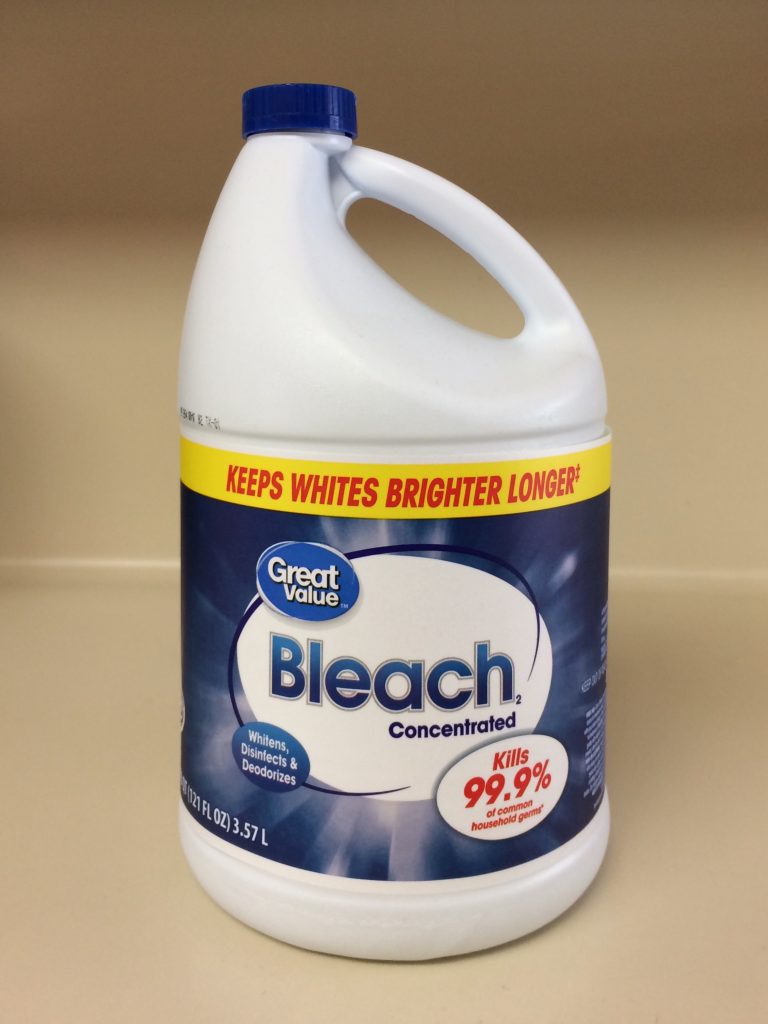
You likely have some chlorine‐based household bleach in your laundry room. The most common brand is probably Chlorox although there are lots of store brands available as well. Chlorine bleach is generally sold as a 6% solution of sodium hypochlorite (NaOCl) in water, which is the strongest I’ve been able to find locally.
You should check the label and avoid anything weaker than 6%. A stronger bleach can be made by mixing calcium hypochlorite crystals (Ca(ClO)2) available from a pool supply store with water. Mix a saturated solution by warming the water and dissolving as much of the calcium hypochlorite as the water will hold.
Household chorine bleach has a definite shelf life, usually 6‐12 months after manufacture. If your bleach is too old it will not work well and should be replaced. Fortunately this type of bleach is inexpensive to there’s no reason to waste time with old bleach.
Expectations:
Household chlorine bleach will lighten wood somewhat, but will not remove the wood’s natural color. It will, however, remove the greenish gray coloring that is common in poplar, returning it to a more natural wood color. Chlorine bleach may also remove some stains or discoloration in the wood.
In Figure 1 below the top half of the three poplar boards on the right was bleached with chlorine bleach; the board on the left was not touched. You can see that the green and gray coloring was changed to a natural wood color but the color itself was not removed. The bleached sections are also slightly lighter in color overall.
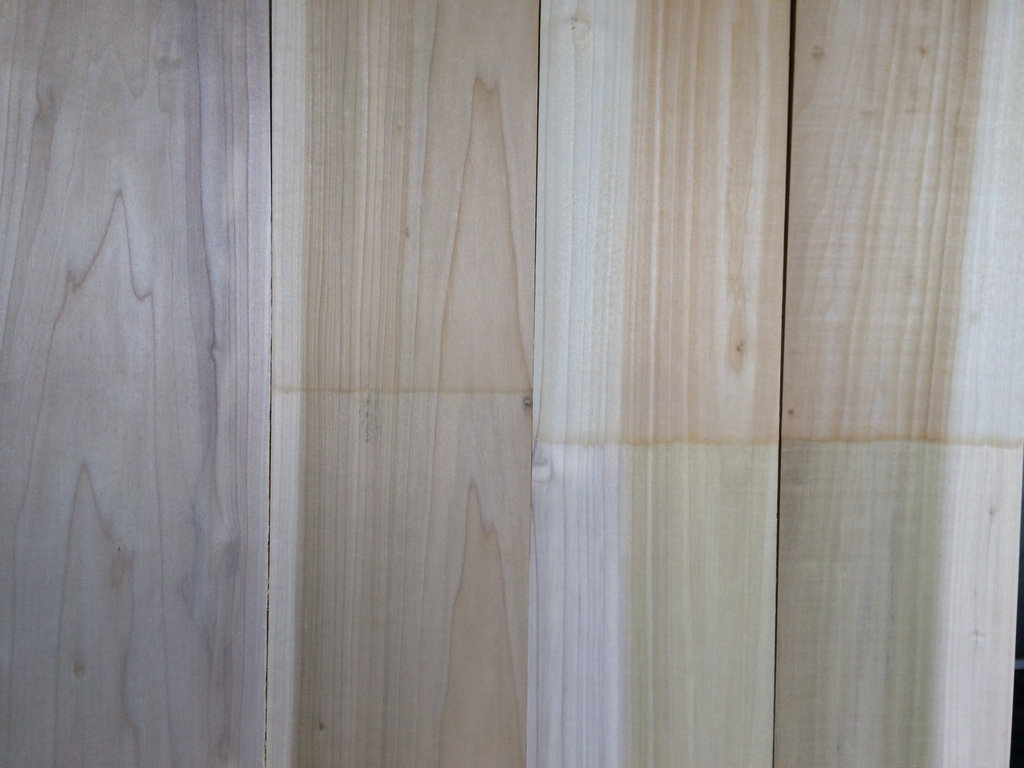
Another interesting fact about chlorine bleach is that it will completely remove any trace of water soluble aniline dye from wood. So if you make a mistake or don’t like a color once you have applied a dye you can easily remove it and start over, as long as you have not put a topcoat of finish over it.
The board in Figures 2 and 3 was completely dyed with JE Moser’s Natural Antique Cherry water soluble aniline dye (Figure 2), allowed to dry overnight, and then the right side was bleached with chlorine bleach (Figure 3).
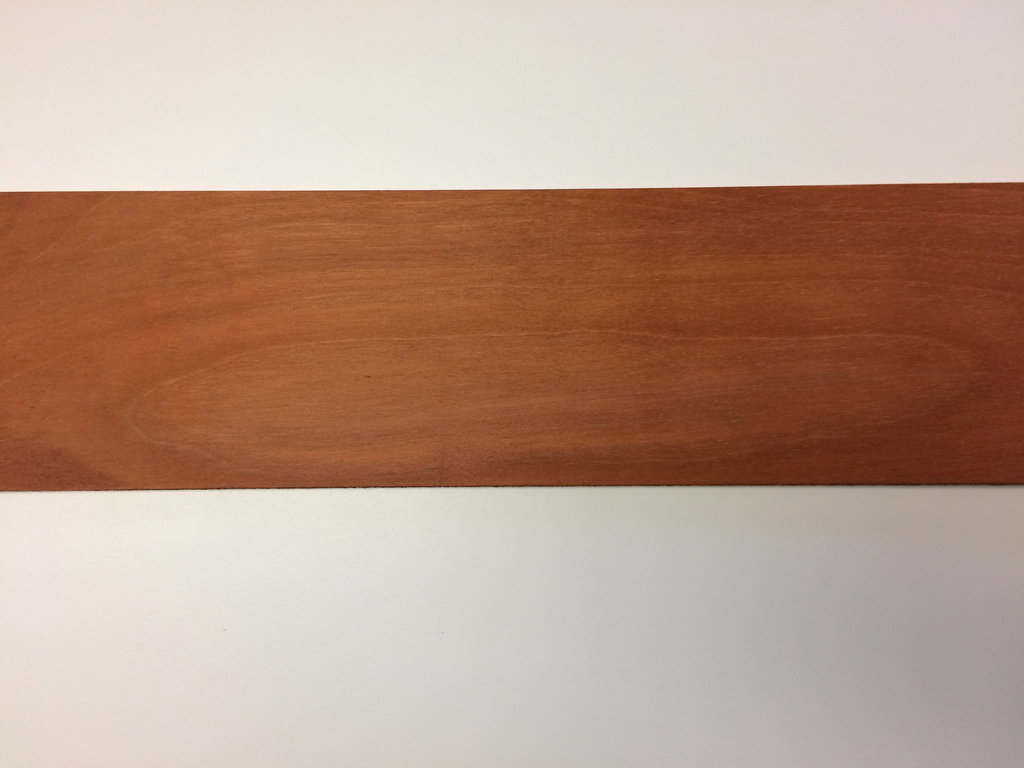
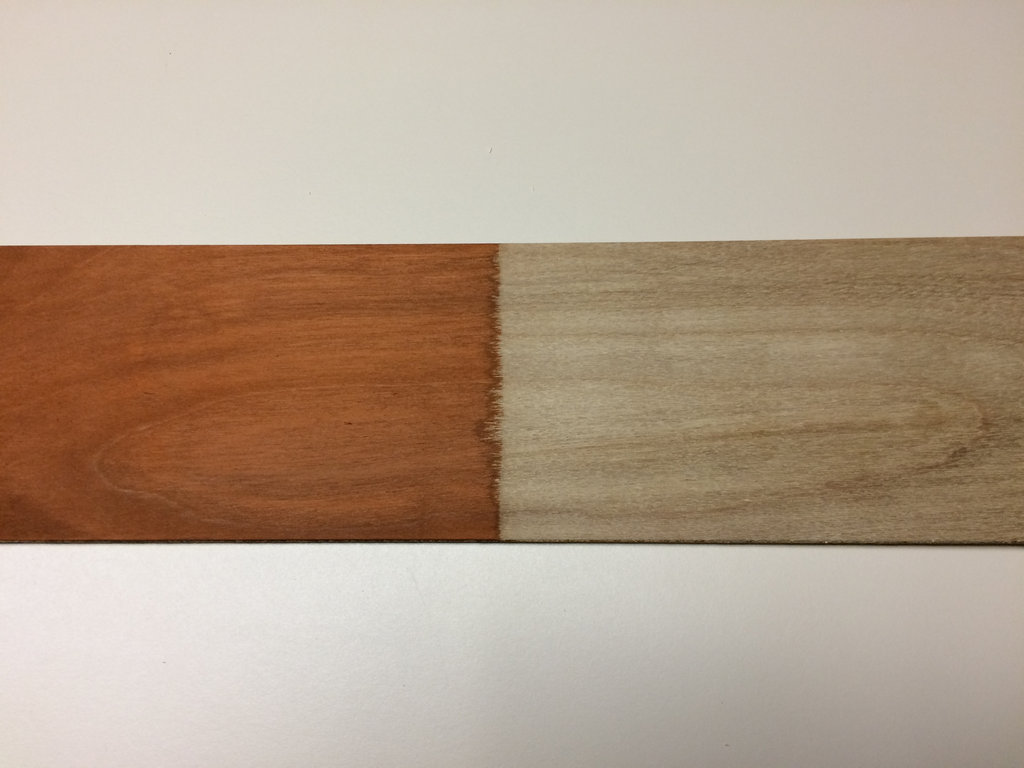
As you can see the dye was completely removed and the right end of the board is ready for recoloring. This will work only on dyes, not pigmented stains.
Application:
You can apply chlorine bleach with a rag or paper towel.
Soak the wood with the bleach and let it dry overnight. If the wood is not light enough you can repeat the process. This may or may not make a difference.
When you have finished bleaching just wipe the wood down with a wet rag and allow to dry. Since sodium hypochlorite is neither acidic nor basic no neutralization of the wood is necessary.
Water will raise the wood grain so sand very lightly with 220 or higher sandpaper when the wood is dry. Don’t sand too much or you’ll go into wood that has not been bleached.
Two‐Part Bleach
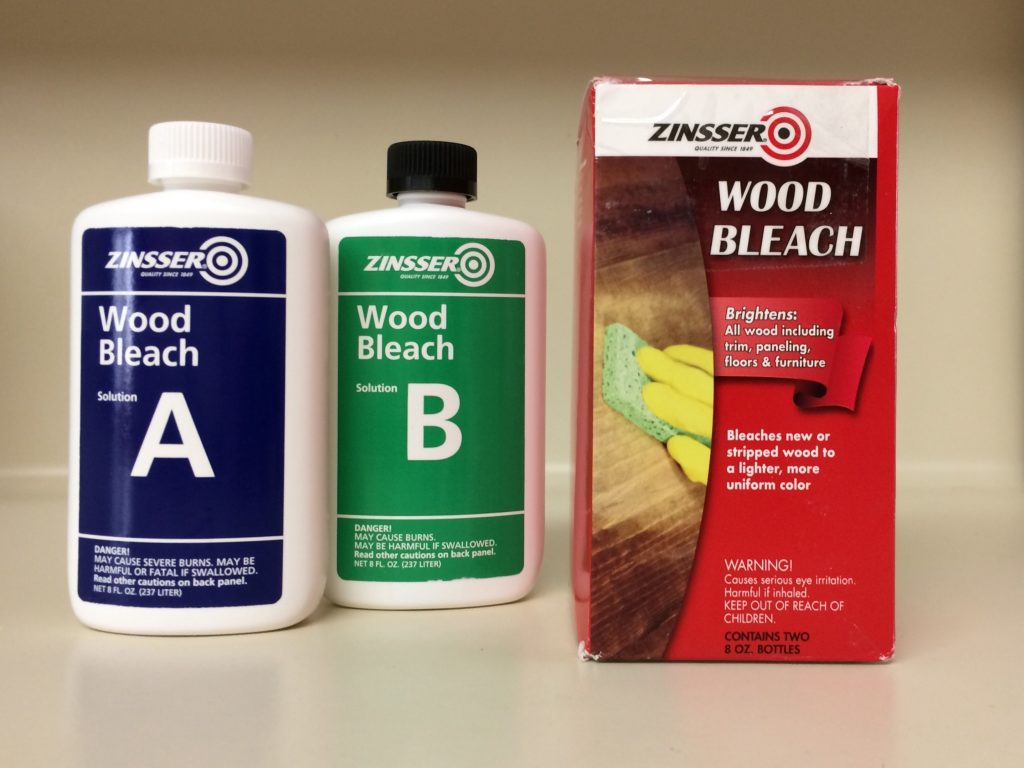
As the name implies there are two components in two‐part bleach that must be mixed, either prior to application or on the wood itself by applying one directly after the other.
The first component is sodium hydroxide (NaOH), also called caustic soda or lye. The second component is hydrogen peroxide (H2O2). When mixed they react quickly to form sodium peroxide (Na2O2), a strong oxidizing agent.
This reaction can be fairly violent so it’s important to read the instructions on the packaging carefully. Only mix the two components together prior to application if the instructions tell you to do so. If premixed the solution must be applied immediately as the bleaching strength dissipates rapidly.
Expectations:
Two‐part bleach is the only way to actually remove the natural color from wood, and it works amazingly well on some species such as red oak and walnut. However, this may not be what you want as it can remove the tonal variances that make wood interesting.
Pine and poplar are already fairly light so don’t expect them to lighten much.
Others like cedar, redwood, and elm are difficult to bleach. Always test on scrap wood or on a hidden area if possible.
Two‐part bleach may also lighten some pigmented stains, but is likely to be ineffective with dyes.
This bleaching system is expensive relative to household bleach, so try the household bleach first to see if it does what you want. You can expect to pay $17–$19 per pint for two‐part bleach compared to about $6 per gallon of chlorine bleach.
In Figure 4 below you can see that red oak will turn bone white with a single application of two‐part bleach.
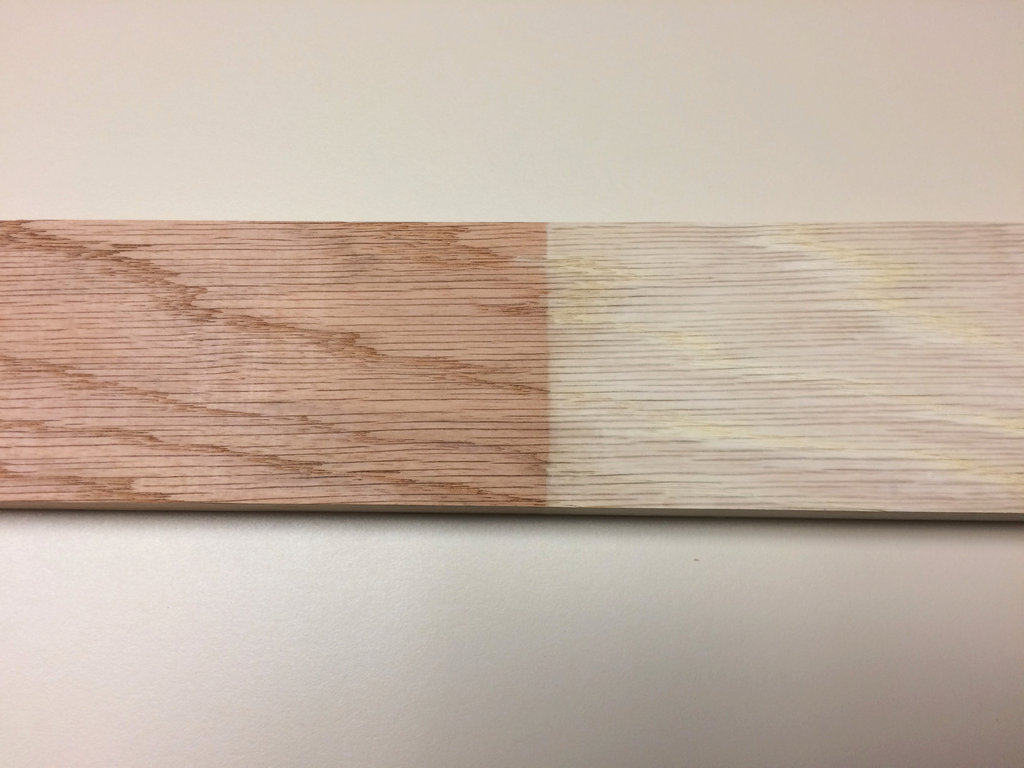
Using the same four‐board poplar panel that was used to test the effectiveness of household bleach, I applied two‐part bleach to the top half of all four boards.
The three boards that had been previously bleached with chlorine bleach got lighter, and the board that had not been bleached (on the left) lightened as well but had a more yellowish hue (Figure 5).
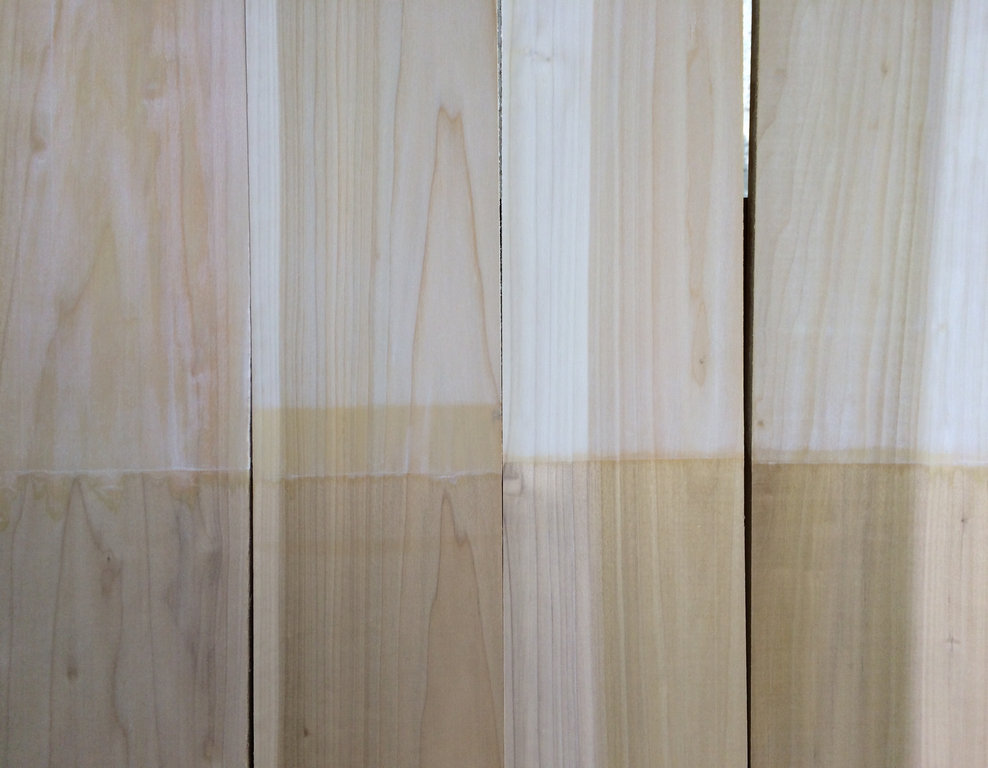
The effect of using more than one type of bleach on the same piece of wood is evident when taking a closer look at one of the boards where the two‐part bleach overlapped onto a section of previously untreated wood (Figure 6).

Application:
Two‐part bleach may be applied with a rag or with a synthetic bristle brush. I tried both and found that brushing was much easier and gave more even coverage than using a rag. Use either glass or plastic containers to mix the components (if the instructions say to to so) or to hold the chemicals. Do not use a metal container.
If applying each component directly to the wood without prior mixing use the order described in the instructions that came with your brand of bleach, although it probably doesn’t make much difference. If applying the caustic (NaOH) first you might notice the wood turning darker. Don’t worry; this will quickly reverse itself once the second component is brushed on.
Allow the wood to dry overnight.
If you’re not satisfied with the results then repeat the bleaching process.
Once you are happy with the color the wood must be neutralized with a mild acid to get rid of any caustic residue. Flood the surface with a 50/50 mixture of water and white vinegar, then rinse with clear water and let dry overnight.
Sand lightly when dry with 220 or higher sandpaper, again taking care not to sand too aggressively.
Oxalic Acid
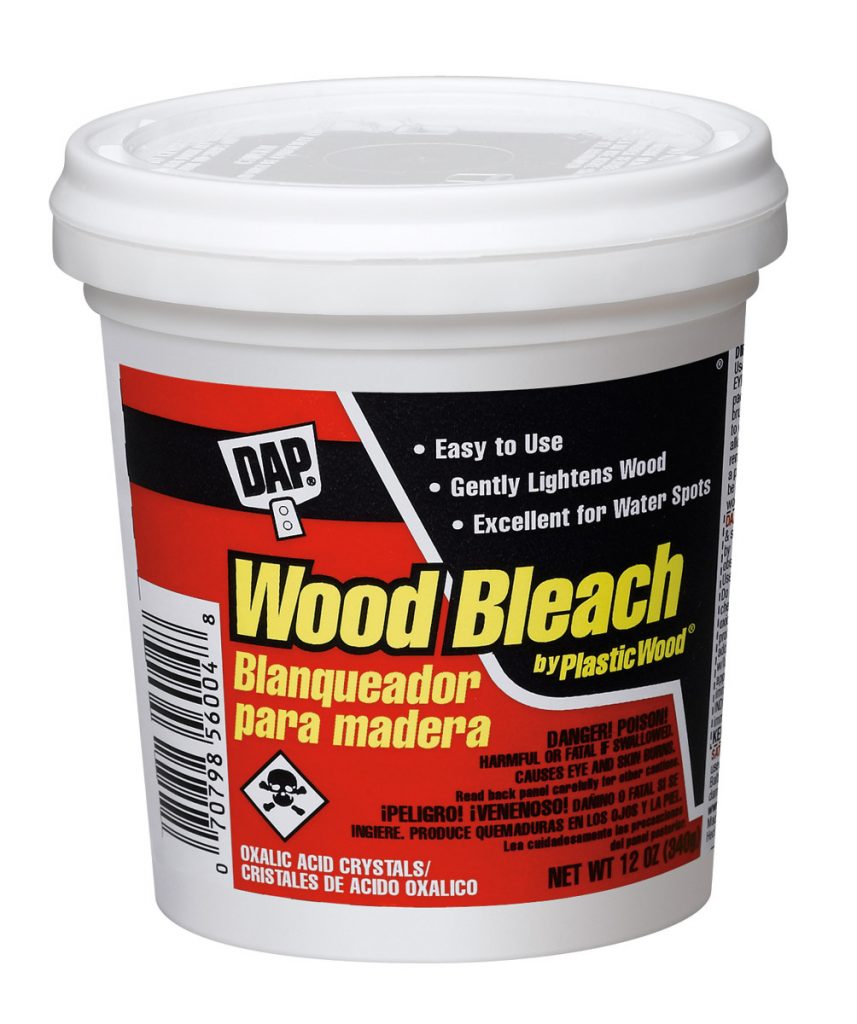
Unlike the previous two bleach types oxalic acid is used primarily to remove dark water/rust stains in wood. It is often labeled as “Wood Bleach”, and it’s easy to mistakenly order oxalic acid when what you really wanted was a two part bleach.
Expectations:
When iron is in contact with tannin in wood it produces a dark stain in the wood. This is usually seen around
nail or screw holes or maybe where an old set of hinges once was. Oxalic acid will remove that discoloration. Tap water can also cause dark stains on wood with high levels of tannic acid because it usually contains trace amounts of iron.
While it will not normally change the wood color itself you should treat the entire surface, not just the area around the stain. Oxalic acid will remove wood oxidation and return grayed and weathered wood to a natural color. Treating the whole surface will ensure that there are no areas that appear lighter than the surrounding wood.
Application:
Oxalic acid is sold in a granular form. To create a saturated solution stir the oxalic acid crystals into hot water in a glass container until no more will dissolve. This solution may be stored for as long as you need to keep it.
Warning: Oxalic acid is very toxic. Be sure to wear a dust mask to avoid inhaling any solid particles while handling.
Apply oxalic acid solution to the work surface with either a rag or a plastic spray bottle until the entire surface is saturated.
Let the wood dry and then re‐wet to be sure the stain is gone. If not then treat again.
Once the stain has been eliminated the wood must be neutralized to remove traces of the acid before applying a finish.
Wash the wood several times with water and baking soda, followed by a clean water rinse.
Let the wood dry overnight and sand lightly as you would with the other types of wood bleach.
Leave a Reply
You must be logged in to post a comment.